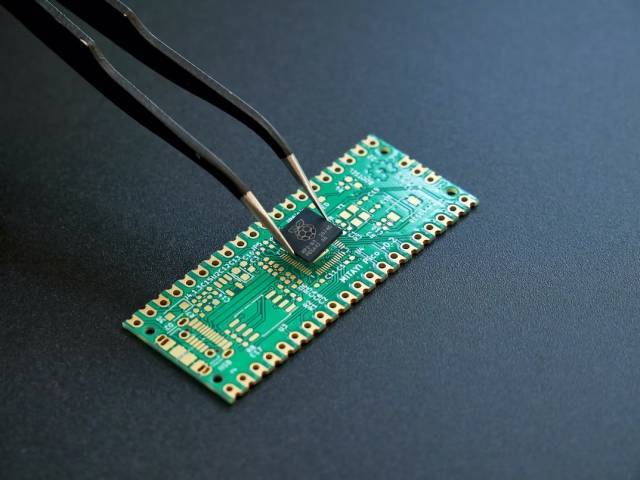Gallium nitride, or GaN, has been dubbed the silicon of the future and is quickly proliferating throughout the power electronics world due to its wide range of semiconductor applications. But just what is this material and why is causing such a stir in the electronics industry?
What is gallium nitride?
Gallium nitride is a transparent, glass-like material that could one day unseat silicon from its position as the backbone of the technology industry and cut energy consumption worldwide. Made up of gallium and nitrogen, gallium nitride is a wide bandgap semiconductor with faster switching speed, higher thermal conductivity and higher breakdown strength than silicon.
All materials have a ‘bandgap’, which relates to how well they conduct electricity. The wide bandgap of GaN allows it to sustain higher voltages than silicon and for the current to run through the device more quickly. That makes GaN electronics more efficient than their silicon counterparts and allows for charging devices that are not only smaller but that also use between 10% and 25% less energy.
How are gallium nitride devices made?
One benefit of the rise in the usage of GaN as a semiconductor is the fact that it can be produced using standard silicon manufacturing procedures and in the same factories that currently produce silicon semiconductors without significant reinvestment. However, it is worth saying that to get the most out of GaN, specialist factories would have to be developed.
As GaN devices are so much more efficient than traditional silicon semiconductors, much smaller GaN devices can deliver the same level of performance as silicon semiconductors. That means many more equivalent GaN devices can be produced per wafer, which reduces the cost of manufacturing and leads to significant savings.
The benefits of gallium nitride
Silicon, which is still the semiconductor of choice for most applications, has plenty going for it. It’s very safe, inexpensive and is compatible with most of our existing semiconductor technologies. However, as devices become more powerful, it’s very quickly reaching its limits, and that’s where the benefits of GaN are really felt.
Innovative power design engineers are now taking advantage of the benefits of GaN to open up new possibilities. The benefits include:
- Reduced energy costs - GaN is inherently more efficient than silicon so less energy is lost as heat. That also leads to smaller sizes and lower material costs.
- Higher breakdown voltage - GaN is ten times more capable of supporting high voltage designs before failing. That makes it superior to silicon in high voltage circuits.
- Higher power density - High operational temperatures and switching frequencies than silicon lead to lower cooling requirements, smaller heat sinks, air cooling rather than liquid cooling and reduced magnetics.
- Higher switching speed - This allows smaller inductors and capacitors to be used in power circuits, reduces the acoustic noise in motor drive applications and enables wireless power transfer at higher powers. The result is a higher level of overall efficiency.
- Lower system costs - Although GaN semiconductors are generally higher cost than silicon, reductions in the size and cost of other components, such as filters, cooling and capacitive circuit elements, lead to typical system savings of 10-20%.
- Higher max operating temperature - GaN is able to operate at higher temperatures with a similar expected lifetime as silicon, or at similar temperatures with a longer life.
What are the applications of gallium nitride?
Gallium nitride has the potential to revolutionise all sorts of power systems. It has long been used in the production of LEDs and RF components but it is now moving to mainstream acceptance across several power switching and conversion applications.
It is finding uses in the mobile phone and laptop industry, with WiFi and GSM signals being transmitted and received using GaN RF devices. It’s also being increasingly used in the chargers and adapters that power these devices. GaN-based products can also increasingly be found in solar power installations.
However, it’s the automotive industry that provides perhaps the biggest growth area for gallium nitride devices. It is becoming the technology of choice for power conversion and fast charging in hybrid and electric cars, providing both a more efficient and more environmentally friendly solution.
Looking for gallium nitride jobs?
With demand on the rise for GaN devices, you can expect to see an increase in the number of top employers looking to fill skills gaps in this field. Take a look at our latest electronics jobs, learn more about the candidate journey or book an initial consultation to start your search.








